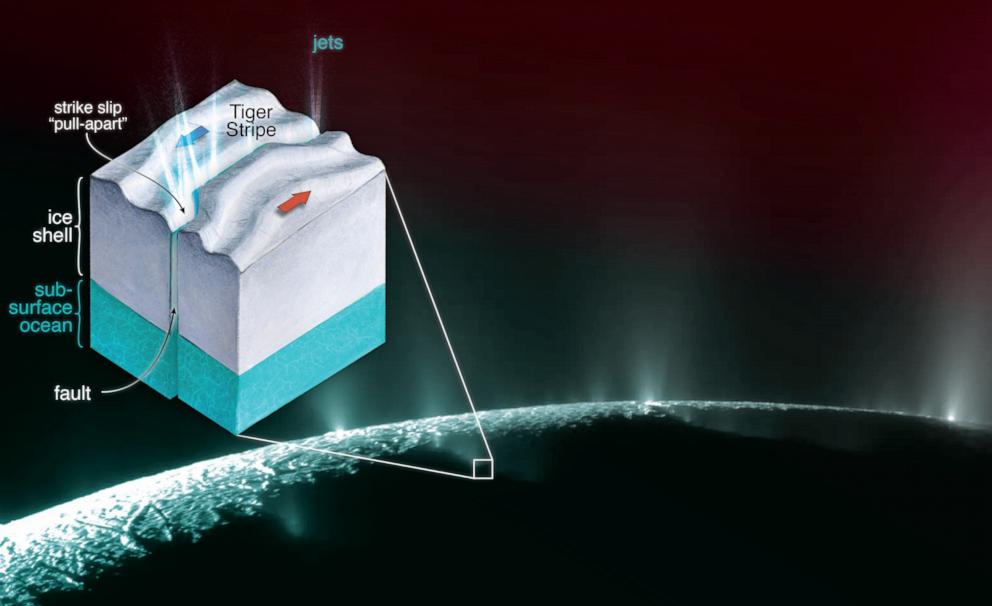
A recent study published on one of Saturn’s many moons, called Enceladus, spotlighted by ABC News, has unveiled new insights into the moon’s iconic “tiger stripes” and their potential link to habitability. Published in Nature Geoscience, the research, led by Alexander Berne from Caltech, explores how these massive fissures in Enceladus’ icy crust may facilitate material transport from its subsurface ocean, offering clues about the moon’s potential to support life.
Central to this study’s success was the use of Coreform Cubit, a powerful software tool that enabled precise finite element simulations of tidal stresses and fault motion along the tiger stripes. By modeling these complex geophysical processes, researchers gained a deeper understanding of how Enceladus’ subsurface ocean interacts with its surface, a critical factor in assessing habitability.
This groundbreaking work, amplified by ABC News’ coverage, underscores the pivotal role of advanced computational tools like Coreform Cubit in unraveling the mysteries of our solar system. Read more about the study and its implications: https://abcnews.go.com/amp/International/tiger-stripes-saturns-moon-enceladus-hint-habitability-study/story?id=109754625
